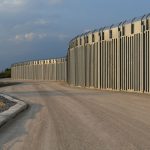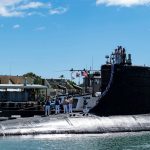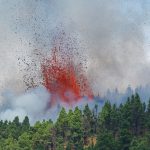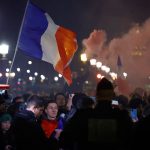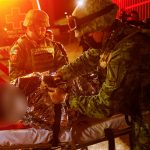Alexei Navalny lived and died fighting against Vladimir Putin’s regime and the corruption at its heart.
Barred in 2018 from running in elections, he remained Mr Putin’s most powerful political opponent.
He was the one man capable of bringing tens of thousands on to the streets calling for a Russia without Mr Putin – and the one man Russia’s president famously refused to mention by name.
Follow live: Putin critic ‘felt unwell after walk’
He was stubborn, sarcastic and exceptionally charismatic – a born populist with a sense of humour which appealed especially to the young.
His YouTube investigations into Mr Putin’s cronies, and finally the president himself, garnered millions of views and exposed graft of the highest order. He acquired ever more powerful enemies.
For a decade, Mr Navalny was tolerated by the Kremlin. He endured a seemingly endless succession of arrests, court appearances and periods in detention but he survived.
Ukraine war latest: Jailed Putin critic Alexei Navalny has died
Alexei Navalny: Putin critic dies after ‘feeling unwell’ and ‘losing consciousness’
Poisonings, plane crashes and falls from windows: What happened to Putin’s most vocal critics
In August 2020, that changed.
Poisoned while on a fact-finding mission
The economic situation was deteriorating and discontent aggravated by the pandemic was growing.
Coupled with that, the Kremlin had an eye on parliamentary elections the following year, which Mr Navalny had vowed to disrupt through an alternative voting system.
In a hotel room in the Siberian city of Tomsk, on a fact-finding mission for one of his investigations, Mr Navalny was poisoned.
The groans recorded by a fellow passenger on the flight back to Moscow were the first indication that something terrible was wrong.
Moments later he fell into a coma.
He later said his life was saved by the pilot, who executed an emergency landing despite warnings of a bomb threat at the airport, and by paramedics who immediately administered the antidote atropine on the airport tarmac.
For three days Mr Navalny’s wife Yulia fought to have him airlifted to Berlin, finally making an appeal directly to Mr Putin, while doctors in Omsk where he was in hospital dithered over the diagnosis.
Once in Berlin, a German military laboratory identified the poison in question. It was novichok, the weapons grade nerve agent used two years earlier against Sergei and Yulia Skripal in Salisbury.
Once again – a banned chemical weapon – and an attack which bore all the hallmarks of the Russian state.
Investigating from his hospital bed
The West imposed sanctions and demanded a full investigation. But the Kremlin refused, even going so far as to suggest Mr Navalny may have poisoned himself.
Mr Putin shrugged off the accusations and returned to a familiar theme, that Mr Navalny was an agent of the West.
“Who needs him anyway?”, the Russian president said at his annual news conference.
“If [they] had wanted to, they would have probably finished it.”
In the care of doctors at Berlin’s Charite hospital, Mr Navalny made a long but miraculous recovery.
From his hospital bed, he laid the groundwork for his most damning investigation yet – into what he called “Putin’s palace”, a billion dollar residence on Russia’s Black Sea coast.
Thanks too to the investigative work of Bellingcat and its Russian partners, he was able to determine the identities of the six intelligence officers who had poisoned him – even managing to get one of them to admit that the poison had been placed in his underpants.
After his recuperation, Mr Navalny stunned the world by saying he would return to Russia.
“Russia is my country, Moscow is my city, I miss them,” he posted on Instagram.
He knew what was in store. He was arrested at passport control for supposedly breaking parole and placed in pre-trial detention.
Read more:
Poisoned, jailed and mysterious falls from windows: What happened to Putin’s most vocal critics
Two days later his Putin’s Palace investigation went viral. Within weeks it had been viewed more than 100 million times.
A lawyer himself, Mr Navalny never faced due process against a raft of politically motivated prosecutions – but he never gave up the fight. And he asked the people not to give up either.
“I am fighting as best I can,” he said in one court appearance. “And I will continue to do so, despite the fact that I’m now under the control of people who love to smear everything with chemical weapons.
“My life isn’t worth two cents, but I will do everything I can so that the law prevails. And I salute all the honest people across the country who aren’t afraid and who take to the streets.”
Tens of thousands did in cities across the country – the largest unsanctioned protests in Putin’s Russia.
More than 10,000 people were detained. But those would be the last large-scale protests Russia would witness.
Constant rotation through solitary confinement
When Mr Putin invaded Ukraine, Mr Navalny called on the people from his jail cell to take a stand, but only a small minority were brave enough to try. Anti-war protests were quickly crushed.
Despite his best efforts to give a voice to the people, his message failed to resonate with a majority of Russians, cowed by two decades’ of Mr Putin’s rule.
The Kremlin piled fresh charges against him of extremism and terrorism – one count, absurdly, being the rehabilitation of Nazism.
In August 2023, he was sentenced to a further 19 years in jail in a special penal regime, for the very worst offenders.
It was effectively a death sentence. On constant rotation through solitary confinement, Mr Navalny’s health deteriorated.
His death in prison at just 47 is another appalling stain on the conscience of the Russian state.



